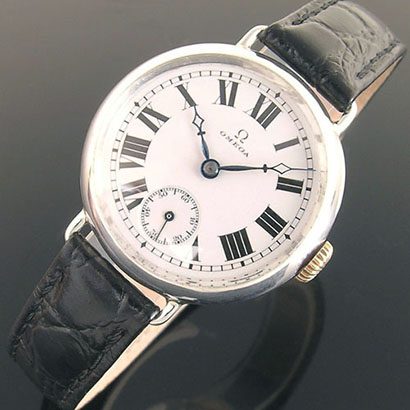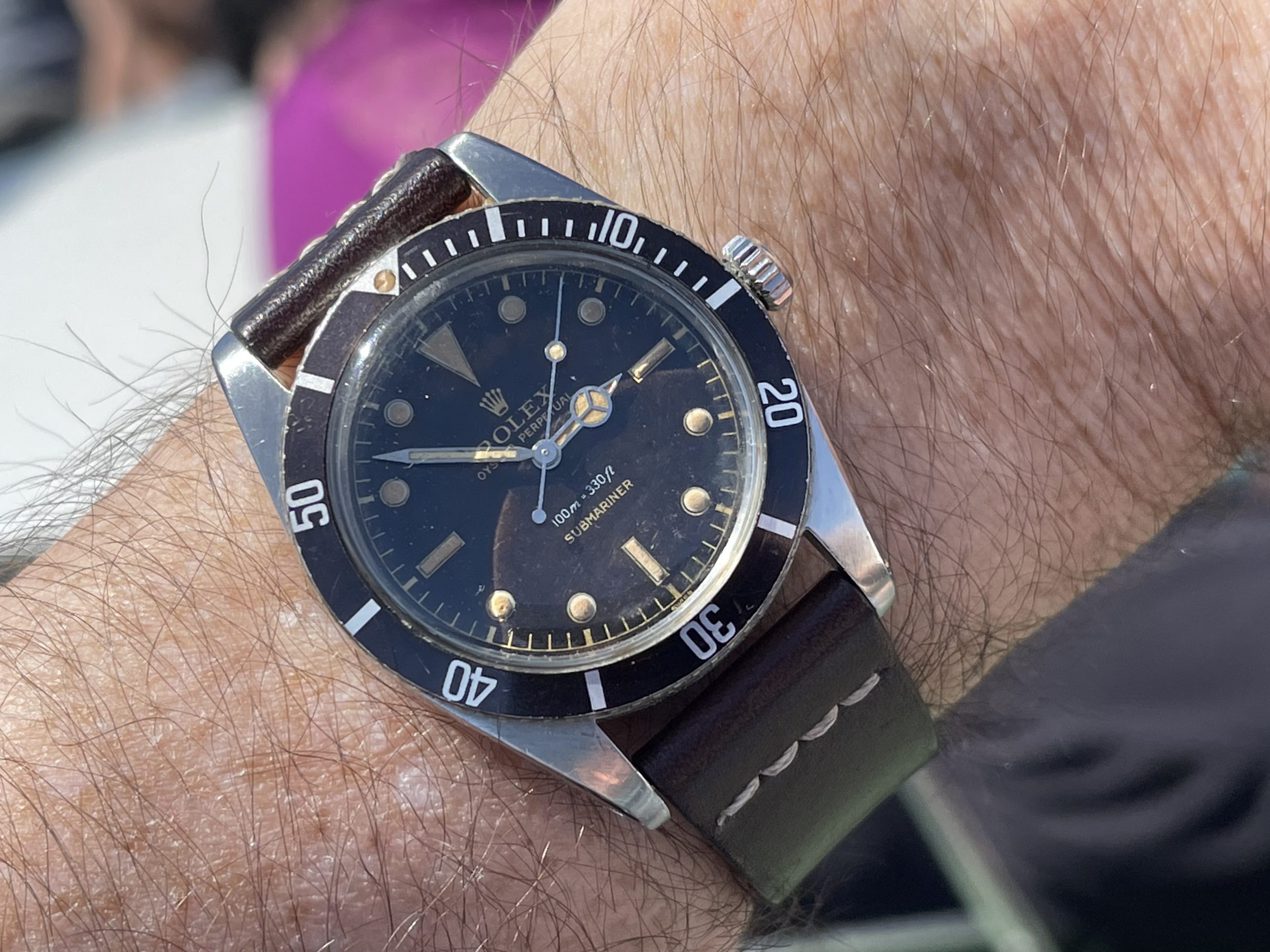WHAT IS A ‘BUMPER’
WATCH MOVEMENT?
The movement of a watch is the engine that powers it, and few have as much charm as the bumper automatic. Here, the experts at Vintage Gold Watches explain everything you need to know about bumper automatics, including where they came from, how they work, and why they fell out of use.
The three main ways watches can be powered, whatever functions they may offer the wearer, are:
- Manual Wind – the watch has a spring inside that must be wound by hand regularly. If the watch is not wound, it will stop once the spring winds down.
- Automatic or Self-winding – the watch has a spring inside wound by a mobile weight or rotor inside the case, activated by the movement of the wearer’s wrist. So long as the watch is worn and the wearer is active, the watch will not stop.
- Battery – the watch has an electric power source, either a battery or a capacitor. This may be disposable or recharged by solar power or power generated by the wearer’s movement.
A bumper automatic is a watch of the second type, being an automatic. It is wound by the movement of a weight within the watch. Unlike a modern automatic, the weight doesn’t swing freely through 360° but moves back and forth through an arc of approximately 230°. The weight is stopped at either end of the swing by a pair of spring-cushioned buffers, creating the ‘bump’ that gives the watch its name and distinctive feel.

The first automatic watches
Watchmakers have pursued the goal of a watch that winds itself since the 18th century. Abraham-Louis Perrelet made the first attempt in 1777. His was a pocket watch with a mobile weight mounted sideways in the case. This moved up and down, following the motion of the body, as the wearer walked, winding the watch.
This must have been only partially successful as there were two subsequent attempts to improve it. The first by Hubert Harton and the second, in 1780 by none other than Abraham-Louis Breguet, who named his movement “Perpetuelle”. The fashion for automatic winding pocket watches never really took off, so further innovation had to wait for the development of the wristwatch.
Throughout the day, your wrist makes far more movements than your whole body, so that a wrist-worn watch would wind more efficiently than a pocket watch. John Harwood worked as a watchmaker after WWII on the Isle of Man. He was concerned about the number of repairs coming to him due to dirt or water getting in through the crown hole and wondered if there might be a better way to wind a watch that could be sealed inside the case.
Inspired by the action of a children’s see-saw, he invented a moving weight system that wound the mainspring via a ratchet. The weight was shock-protected by a piston at each end of the arc of the swing, and so the first ‘bumper’ movement was born.
Harwood went further, using the watch’s bezel to set the hands; there was no need for a crown, meaning the watch could remain fully closed between servicing. The watch was patented in 1924, and the first watches were released in 1928, with the movements made by Anton Schild and the cases by Fortis.
Sadly, fate conspired against Harwood, and after the Wall Street Crash and Depression in 1929, the company lost its funding and soon after went out of business.

The automatic movement evolves
Leon Hatot, a Parisian Jeweller, took a more unusual approach to self-winding. He worked with Blancpain, who had previously created watches powered by Harwood’s movement, to make the ‘Rolls’ watch. Unlike the Harwood, the Rolls saw the entire movement roll backwards and forwards on rails within the case to create the winding effect. Time setting had to be done by opening the case, as the movement could not line up with a crown hole. Unsurprisingly, this particular ‘bumper’ solution was a quirky dead-end.
1931 is the date given by Rolex for the patenting of their Oyster Perpetual movement. Unlike Harwood’s approach, the Rolex winding weight travelled a complete 360° both ways around the movement, a far more efficient system, although it only wound in one direction of travel. With no resistance to the motion of the rotor, there were no ‘bumps’, so Rolex never used a bumper automatic in their watches.
Crucially, the Rolex patent closed the door on other brands using a 360° rotor until the patent expired in 1948. Movement manufacturer Felsa loosened the stranglehold a little in 1942 with the release of their Bidynator calibre, which was the first to wind in two directions. Still, big brands such as Omega, Longines, Vacheron Constantin, Jaeger-LeCoultre, and Zenith had to soldier on with an inferior solution. Once the Rolex patent expired, 360° rotors became the norm, and the curious clunking of a ‘bumper automatic’ dwindled into history.

The pros and cons of a bumper automatic
Bumper automatics are a little more delicate than their full-rotor counterparts. Even though the mobile weight is cushioned, more shock is applied to the movement as it winds. With the weight’s travel limited to 230°, the winding effect is less efficient than a 360° rotor, especially a modern movement that can wind in both directions. With the demise of the bumper automatic movement at the start of the 1950s, many of these watches will be at least 60 years old and will need handling appropriate to their age.
They might be less efficient, but collecting vintage bumper automatics has a considerable charm. These movements were produced to a high standard by some of the finest manufacturers in the world, so you know you are getting a quality product. They can still be serviced and restored and are capable of accurate timekeeping to chronometer standards. Once you have felt that distinctive clunk of the winding weight shifting, it is a motion you must keep repeating for the sheer joy of it.
Important examples of bumper automatic watches
- Omega Constellation Cal.354 Bumper Automatic
The quality of Omega’s bumper automatics is demonstrated by the fact that this movement persisted for 11 years after the Rolex Oyster Perpetual patent expired. The 17 jewel movement can keep time within chronometer tolerances of -4 to +6 seconds per day. - Jaeger-LeCoultre Memovox.
Bumper automatics don’t have to be time-only, as shown by this fine example from Jaeger LeCoultre. The world’s first self-winding alarm watch, it was still using the bumper calibre K825 as late as 1968. - Vacheron Constantin
This ‘Holy Trinity’ watchmaker created calibre K477/1 using a bumper winding system for their first automatic movement, as housed in this stunning 1954 example. - Universal Geneve’s calibre 139
This was a significant bumper movement that survived well into the 1950s. Its sibling movement, the calibre 138, was used in the iconic Polerouter model, designed by Gerald Genta, for the first year of its production before being replaced by a micro-rotor alternative.
As a footnote, Rolex has a regular habit of subtly editing its history. After claiming to have invented the automatic wristwatch in the 1930s, Harwood complained, causing Rolex to produce an advertisement including both Harwood and Perrelet, correctly reducing their role in developing the 360° rotor. They did it again in the 1950s with an ad that over inflated their invention, leading to a printed statement by Rolex in the 1956 Sunday Express newspaper. Here, they formally apologised to John Harwood and gave him full credit for inventing the self-winding wristwatch.
To find the finest examples of watches from the world’s most prestigious brands, including models of the bumper automatic, browse the sales pages of Vintage Gold Watches.
Learn more about the world of vintage watch collecting by signing up to our regular newsletter here.




